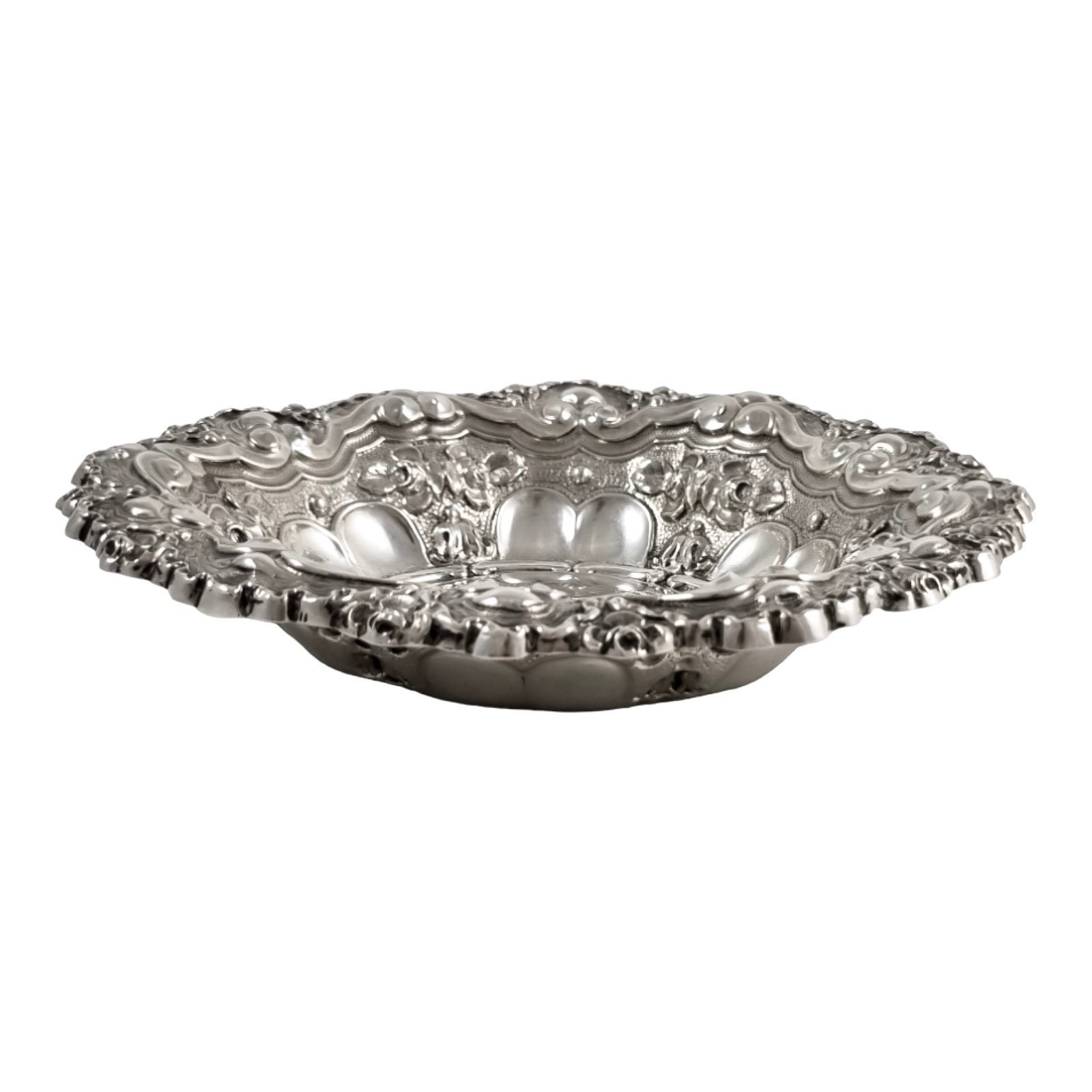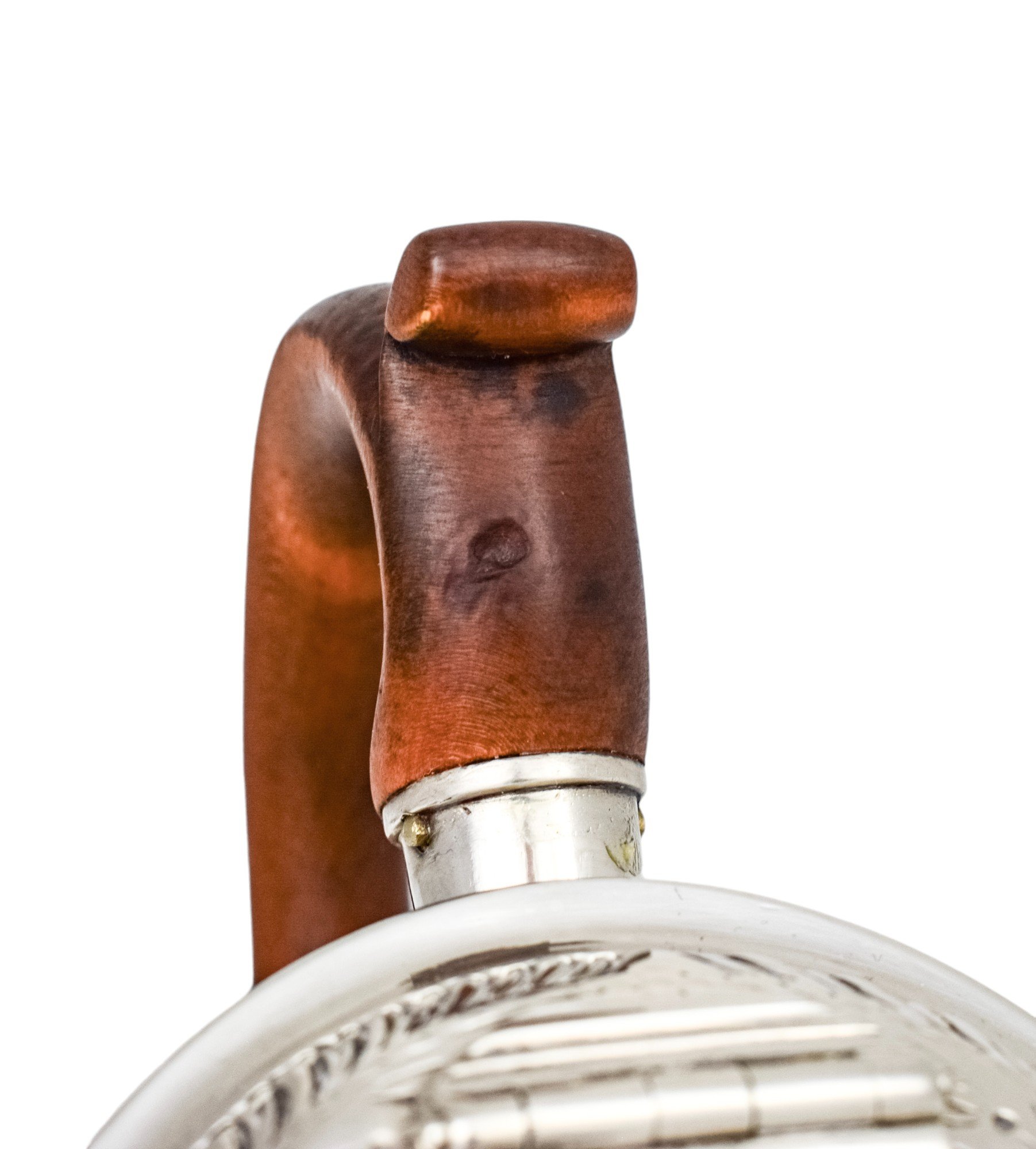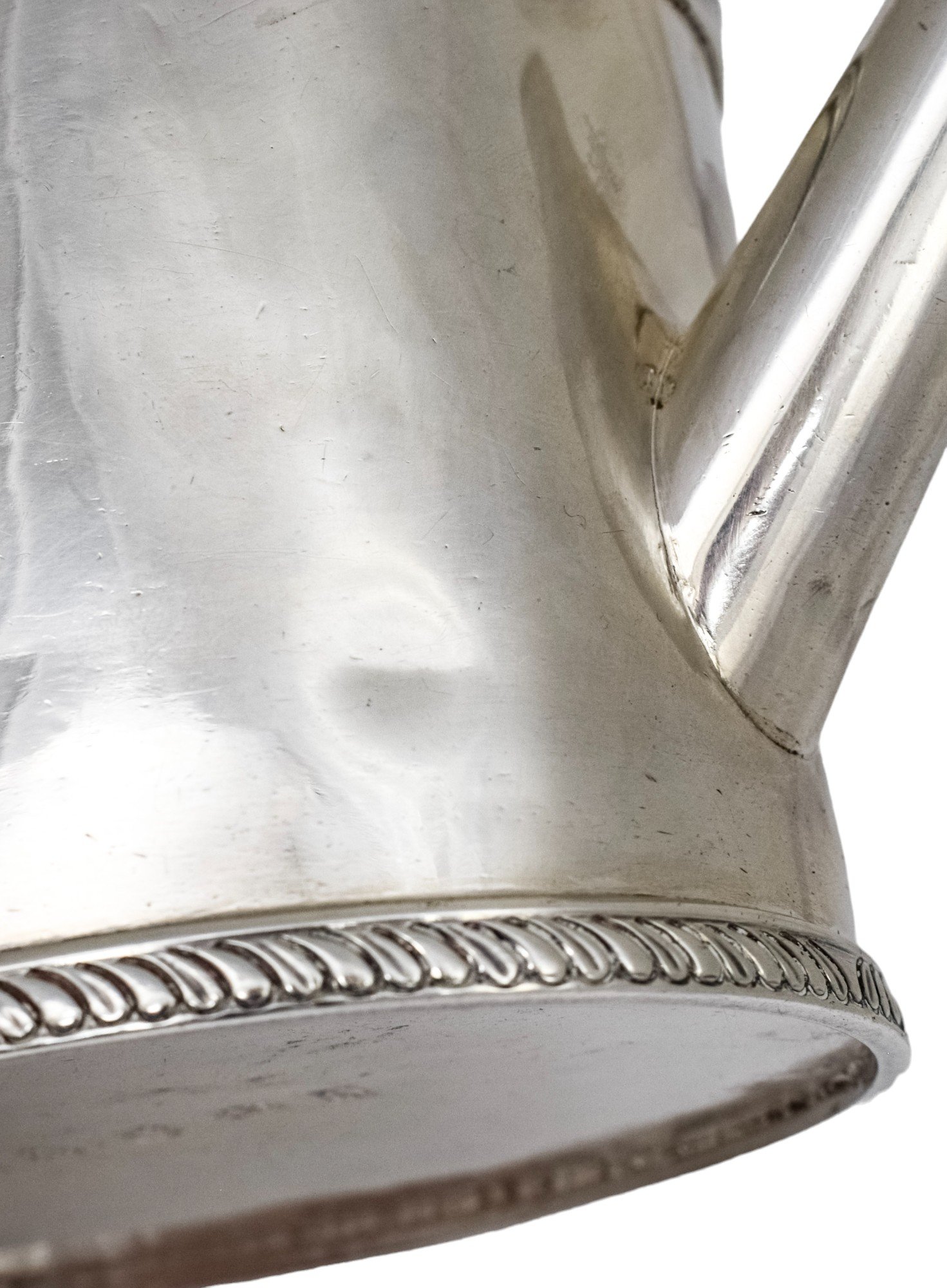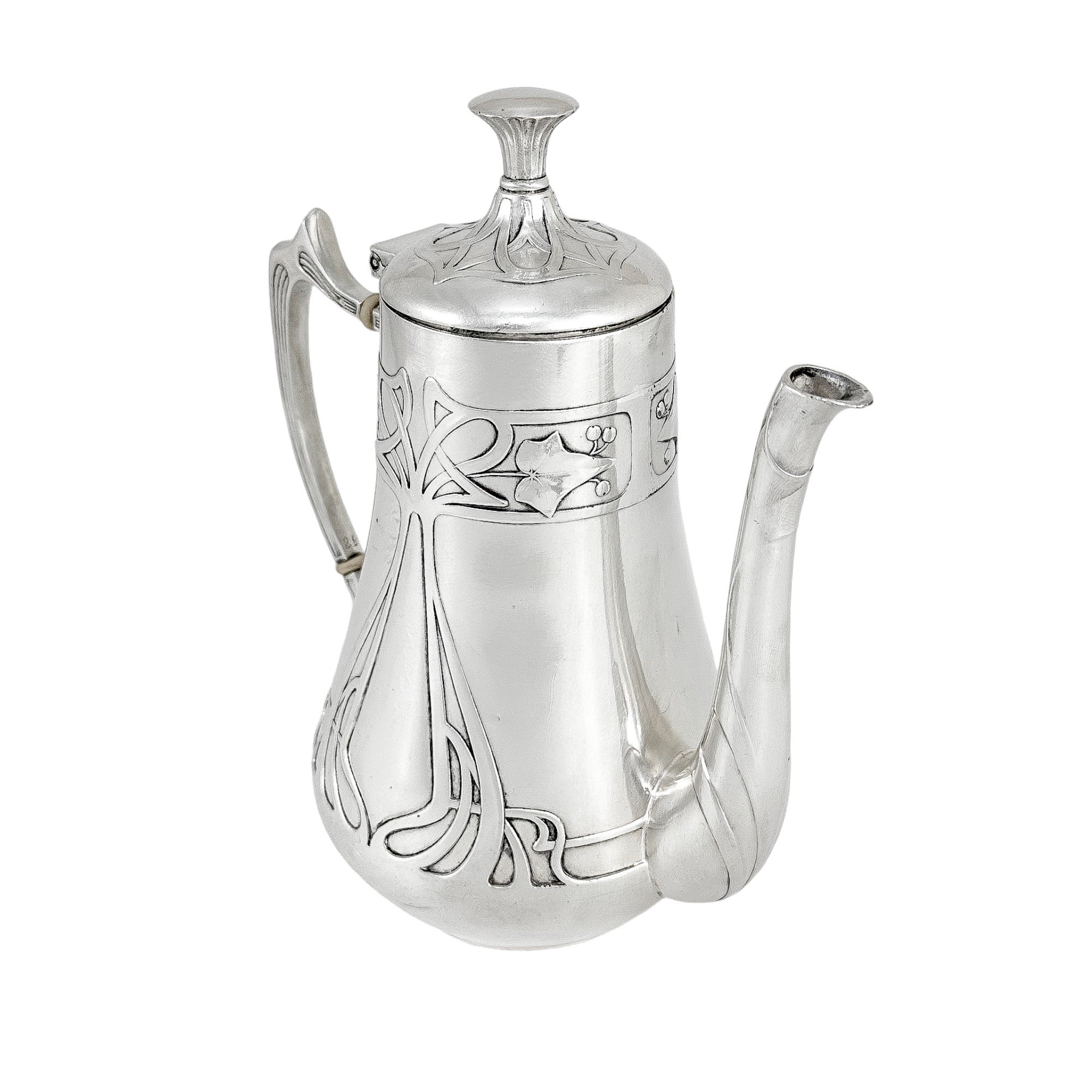 Image 1 of 13
Image 1 of 13

 Image 2 of 13
Image 2 of 13

 Image 3 of 13
Image 3 of 13

 Image 4 of 13
Image 4 of 13

 Image 5 of 13
Image 5 of 13

 Image 6 of 13
Image 6 of 13

 Image 7 of 13
Image 7 of 13

 Image 8 of 13
Image 8 of 13

 Image 9 of 13
Image 9 of 13

 Image 10 of 13
Image 10 of 13

 Image 11 of 13
Image 11 of 13

 Image 12 of 13
Image 12 of 13

 Image 13 of 13
Image 13 of 13














Large antique English sterling silver sugar bowl with hoof feet and scroll handles, Sheffield 1899
A large and impressive antique sterling silver sugar bowl, dating to the late Victorian period. Made by Mark Willis and assayed in Sheffield in 1899. The round baluster body is raised on four hoof feet, each topped with an engraved scallop shell design that contrasts beautifully with the otherwise plain polished surface. The bowl is fitted with two cast S-scroll handles, detailed with plain thumbpieces and scrolling terminals. The form is elegant and full-bodied, reflecting the refinement of late 19th-century English silver craftsmanship.
Very impressive and heavy piece with a strong silver gauge throughout, offering a satisfying weight and presence. Ideal for use as a sugar bowl, bonbon dish, or small decorative centrepiece for refined table settings and period interiors.
242.26 g / 7.79 troy oz
Height to rim: 8.5 cm / 3.35″
Height to handles: 10 cm / 3.94″
Diameter: 9.5 cm / 3.74″
Width across handles: 16.5 cm / 6.50″
Excellent antique condition with a strong gauge of silver, a sturdy structure, and a highly polished surface. The cast handles are securely attached, and the bowl stands evenly on all four feet. Crisp detail to the engraved feet contrasts attractively with the plain body. Minor surface marks and light scratches consistent with age. Some natural firescale (a faint pinkish tone), typical of antique sterling silver, visible in places and formed during the original manufacture.
A large and impressive antique sterling silver sugar bowl, dating to the late Victorian period. Made by Mark Willis and assayed in Sheffield in 1899. The round baluster body is raised on four hoof feet, each topped with an engraved scallop shell design that contrasts beautifully with the otherwise plain polished surface. The bowl is fitted with two cast S-scroll handles, detailed with plain thumbpieces and scrolling terminals. The form is elegant and full-bodied, reflecting the refinement of late 19th-century English silver craftsmanship.
Very impressive and heavy piece with a strong silver gauge throughout, offering a satisfying weight and presence. Ideal for use as a sugar bowl, bonbon dish, or small decorative centrepiece for refined table settings and period interiors.
242.26 g / 7.79 troy oz
Height to rim: 8.5 cm / 3.35″
Height to handles: 10 cm / 3.94″
Diameter: 9.5 cm / 3.74″
Width across handles: 16.5 cm / 6.50″
Excellent antique condition with a strong gauge of silver, a sturdy structure, and a highly polished surface. The cast handles are securely attached, and the bowl stands evenly on all four feet. Crisp detail to the engraved feet contrasts attractively with the plain body. Minor surface marks and light scratches consistent with age. Some natural firescale (a faint pinkish tone), typical of antique sterling silver, visible in places and formed during the original manufacture.
A large and impressive antique sterling silver sugar bowl, dating to the late Victorian period. Made by Mark Willis and assayed in Sheffield in 1899. The round baluster body is raised on four hoof feet, each topped with an engraved scallop shell design that contrasts beautifully with the otherwise plain polished surface. The bowl is fitted with two cast S-scroll handles, detailed with plain thumbpieces and scrolling terminals. The form is elegant and full-bodied, reflecting the refinement of late 19th-century English silver craftsmanship.
Very impressive and heavy piece with a strong silver gauge throughout, offering a satisfying weight and presence. Ideal for use as a sugar bowl, bonbon dish, or small decorative centrepiece for refined table settings and period interiors.
242.26 g / 7.79 troy oz
Height to rim: 8.5 cm / 3.35″
Height to handles: 10 cm / 3.94″
Diameter: 9.5 cm / 3.74″
Width across handles: 16.5 cm / 6.50″
Excellent antique condition with a strong gauge of silver, a sturdy structure, and a highly polished surface. The cast handles are securely attached, and the bowl stands evenly on all four feet. Crisp detail to the engraved feet contrasts attractively with the plain body. Minor surface marks and light scratches consistent with age. Some natural firescale (a faint pinkish tone), typical of antique sterling silver, visible in places and formed during the original manufacture.




























































